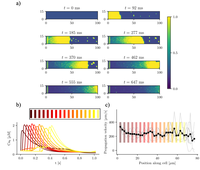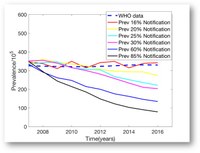Cristina Masoller, Pablo Amil, Donatus Halpaap and Jordi Tiana-Alsina are researchers from the UPC Physics Department at the Terrassa Campus. The team of ...
Located in
News

Miquel Marchena defended his thesis directed by Dr. Blas Echebarria on July 23, 2020. Titled "Modeling the pathological effects on intracellular calcium ...
Located in
News

Joan Francesc Gilabert Navarro defended his thesis directed by Victor Guallar of the Barcelona Supercomputing Center (BSC) the 22th of July in the North ...
Located in
News

Hossameldin will present his thesis co-directed by Crina Cojocaru (Dept. of Physics) and Miguel Delgado prieto (Dept. of Electronic Engineering), on July 21 at ...
Located in
News

Student Nura Mohammad Rabiu Ahmad virtually defended his thesis co-directed by Clara Prats and Daniel López on July 20. The thesis entitled “Multiapproach ...
Located in
News

Jordi Boronat, Director of the department of Physics, together with M. C. Gordillo from the University of Pablo de Olavide in Seville found evidences of of a ...
Located in
News

A team of researchers from the Computational Biology and Complex Systems research group (BIOCOM- SC) of the Polytechnic University of Catalonia (UPC) and the ...
Located in
News
A team of researchers made up of professors from the UPC Physics department, from the Institute of Nanoscience and Nanotechnology, University of Barcelona, ...
Located in
News

In an international collaborative project, researchers from the UPC Physics Department and the University of Potsdam (Germany) have identified a new form of ...
Located in
News

Researchers from the Computational Biology and Complex Systems group (BIOCOM-SC) of the UPC and the Center for Comparative Medicine and Bioimaging (CMCiB) of ...
Located in
News
